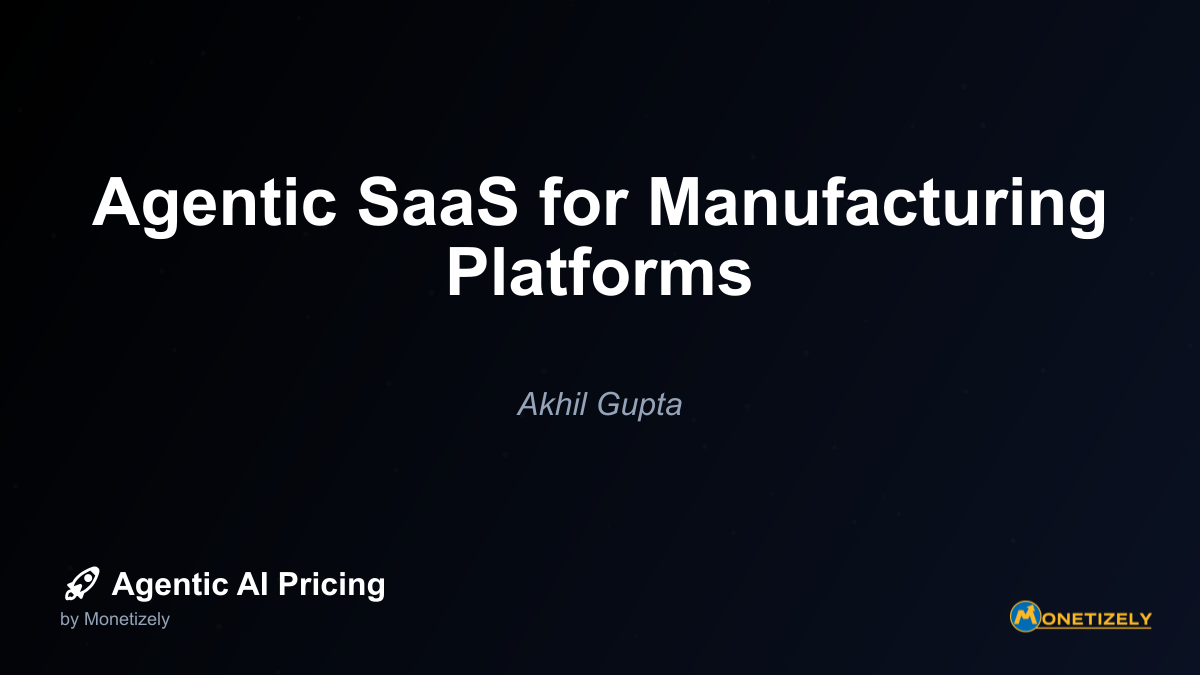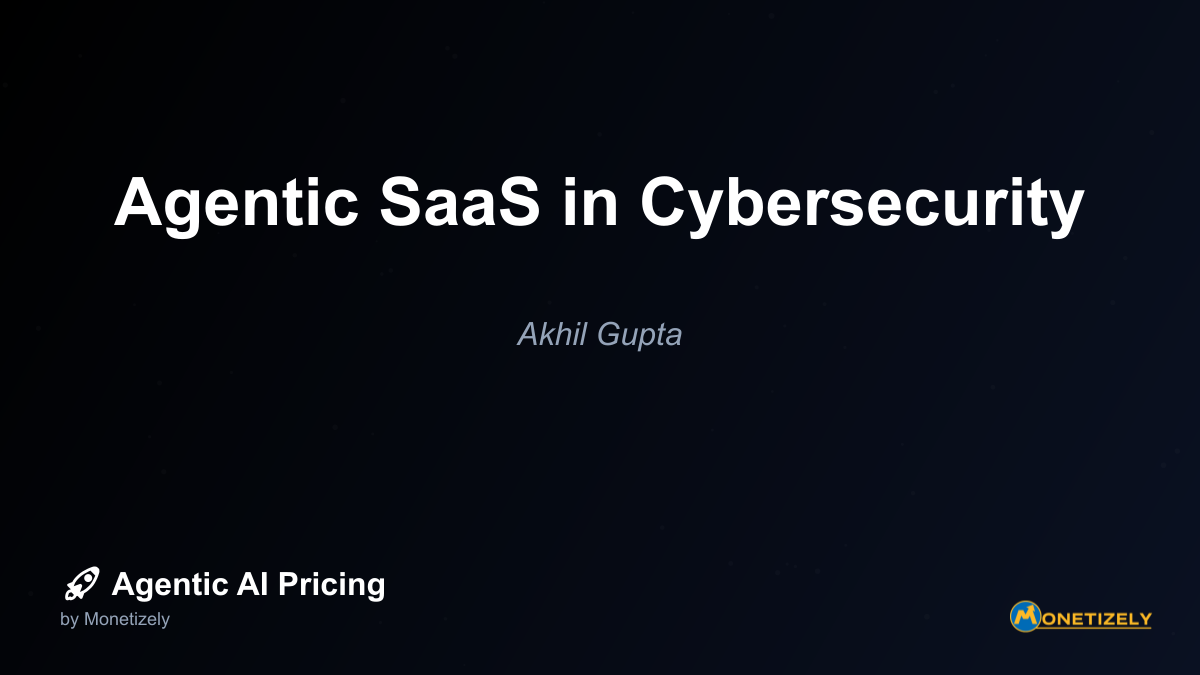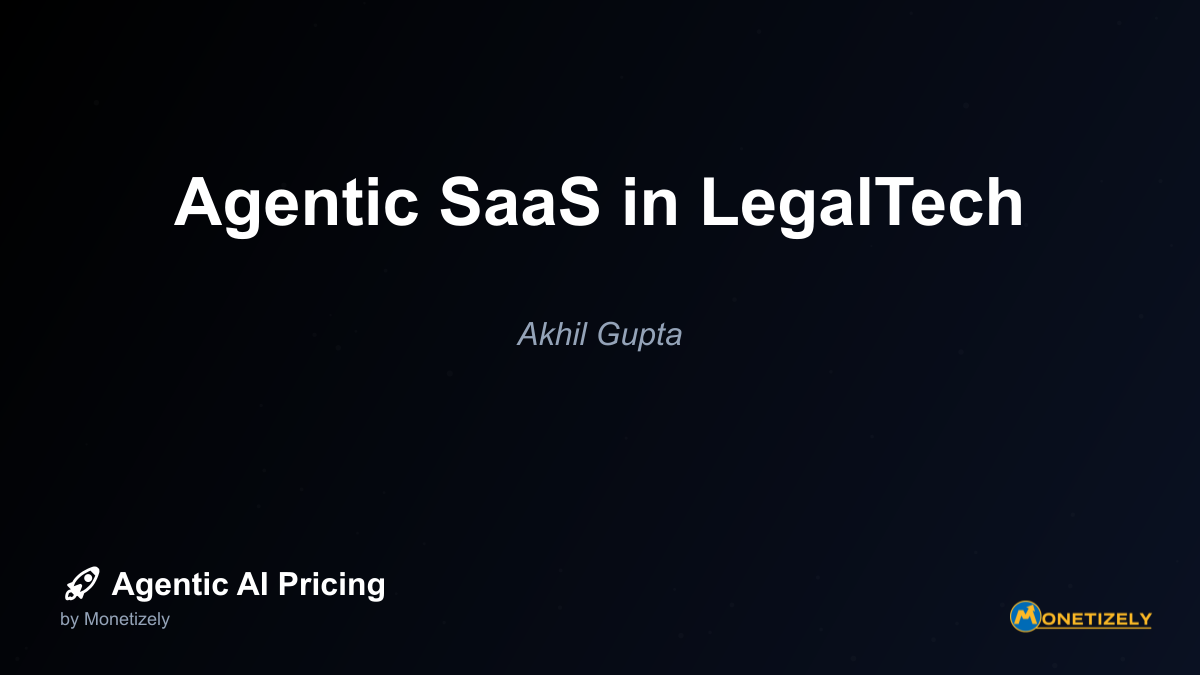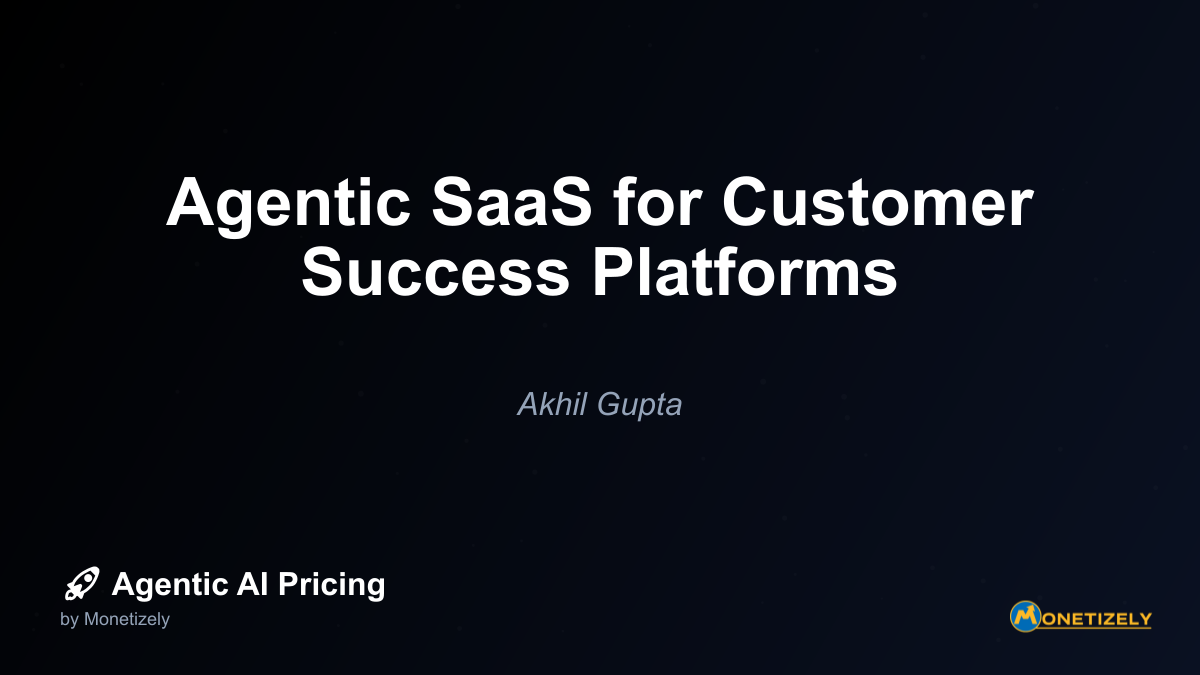· Ajit Ghuman · Vertical Applications · 6 min read
Agentic SaaS for HR Tech: Recruiting Agents
AI and SaaS Pricing Masterclass
Learn the art of strategic pricing directly from industry experts. Our comprehensive course provides frameworks and methodologies for optimizing your pricing strategy in the evolving AI landscape. Earn a professional certification that can be imported directly to your LinkedIn profile.
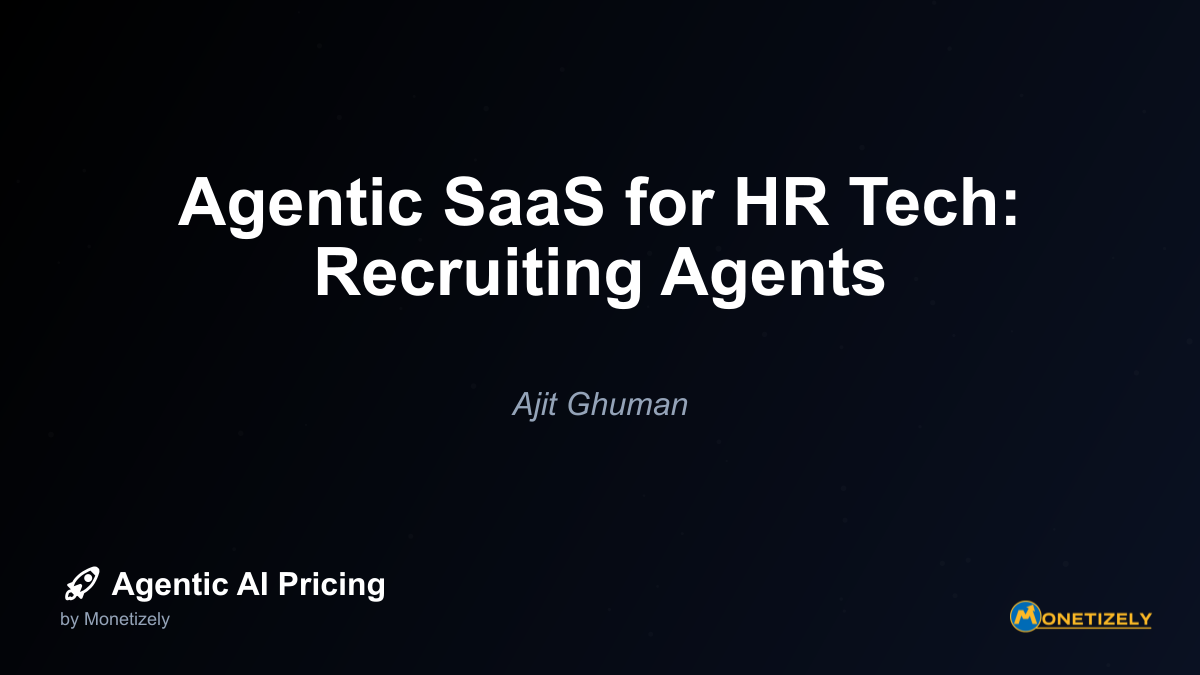
Future Trends in Recruiting Agent Technology
The recruiting agent landscape continues to evolve rapidly, with several emerging trends likely to shape future implementations:
Conversational Pre-Screening
Next-generation recruiting agents are moving beyond basic text analysis to incorporate sophisticated conversational capabilities:
- Video interview pre-screening: AI agents that can conduct initial video interviews, analyzing both verbal responses and non-verbal cues
- Voice-based screening: Conversational agents that engage candidates through natural voice interactions
- Multi-modal assessment: Systems that combine text, voice, and video interactions for comprehensive evaluation
These approaches create more engaging candidate experiences while gathering richer data for evaluation.
Predictive Success Modeling
Advanced recruiting agents are increasingly incorporating predictive analytics to identify candidates most likely to succeed:
- Performance pattern matching: Comparing candidate profiles to high-performing employees
- Retention prediction: Identifying candidates with characteristics associated with longer tenure
- Team fit analysis: Evaluating how candidates might complement existing team dynamics
- Career trajectory mapping: Projecting potential growth paths based on candidate attributes
These capabilities help organizations make more strategic hiring decisions focused on long-term outcomes rather than simply filling immediate needs.
Hyper-Personalization at Scale
Future recruiting agents will deliver increasingly personalized experiences while maintaining efficiency:
- Candidate-specific engagement strategies: Tailoring communication style and content based on individual preferences and behavior
- Dynamic assessment pathways: Adjusting evaluation processes based on candidate responses and strengths
- Personalized employer branding: Highlighting aspects of the organization most relevant to each candidate’s priorities
- Individualized feedback loops: Providing constructive guidance even to candidates who aren’t selected
This personalization helps organizations differentiate their candidate experience in competitive talent markets without sacrificing efficiency.
How to Evaluate and Select Recruiting Agent Solutions
Organizations considering recruiting agent technology should establish a structured evaluation framework that considers:
Functional Requirements Assessment
Begin by clearly defining what the system needs to accomplish:
- Which roles and hiring volumes will the system support?
- What specific pre-screening criteria need to be evaluated?
- Which parts of the process should remain human-driven?
- What level of candidate engagement is appropriate?
- Which existing systems must the solution integrate with?
These requirements should be prioritized and used to create a scoring framework for vendor evaluation.
Technical Evaluation Criteria
Beyond functional capabilities, technical considerations significantly impact success:
- AI model transparency: How clearly can the vendor explain their decision-making algorithms?
- Training data diversity: What data was used to train the system, and how representative is it?
- Customization capabilities: Can the system be tuned to organization-specific requirements?
- Scalability: How effectively does the system handle volume fluctuations?
- Security and compliance: What safeguards protect candidate data and ensure regulatory compliance?
Organizations should request detailed documentation and, when possible, technical demonstrations addressing these areas.
ROI Calculation Framework
Develop a comprehensive ROI model that accounts for both direct and indirect benefits:
- Direct cost savings: Reduced recruiter hours for screening and administrative tasks
- Time-to-fill improvements: Value of positions filled more quickly
- Quality-of-hire enhancements: Long-term value of better-matched candidates
- Candidate experience improvements: Impact on employer brand and acceptance rates
- Implementation and ongoing costs: Total cost of ownership including integration and maintenance
This analysis should consider both immediate returns and longer-term strategic value to the organization.
For a more comprehensive understanding of HR technology pricing models, you might find additional insights in our article on HR Tech Pricing: Per-Employee vs Flat-Rate Strategies, which explores the tradeoffs between different pricing approaches for HR technology platforms.
Implementation Best Practices for Recruiting Agents
Organizations that successfully implement recruiting agents typically follow several best practices:
Phased Deployment Strategy
Rather than attempting a complete transformation at once, successful implementations typically follow a phased approach:
- Pilot implementation for specific high-volume roles
- Evaluation and refinement based on initial results
- Gradual expansion to additional roles and departments
- Continuous optimization as the system learns from outcomes
This approach minimizes disruption while allowing for adjustments based on real-world performance.
Human-AI Collaboration Model
The most effective implementations clearly define how human recruiters and AI agents will collaborate:
- Which decisions remain exclusively human-driven
- How recruiters provide feedback to improve agent performance
- When and how recruiters can override agent recommendations
- How exceptions are handled when standard processes don’t apply
Organizations that frame recruiting agents as tools that augment human capabilities rather than replacements for human judgment typically see higher adoption rates and better outcomes.
Candidate Communication Strategy
Transparency with candidates about AI involvement in the recruiting process is increasingly important:
- Clear disclosure about which parts of the process involve AI
- Explanation of how the system evaluates applications
- Options for candidates who prefer human interaction
- Feedback mechanisms for candidates to report concerns
This transparency builds trust while setting appropriate expectations about the recruiting experience.
Ethical Considerations in Recruiting Agent Deployment
As with any AI system making consequential decisions, recruiting agents raise important ethical considerations:
Bias Detection and Mitigation
All AI systems risk perpetuating historical biases present in their training data. Organizations must implement:
- Regular bias audits comparing outcomes across demographic groups
- Ongoing monitoring for potential disparate impact
- Transparent documentation of mitigation strategies
- Diverse training data that represents the full candidate pool
- Human oversight of edge cases and potential bias indicators
These safeguards help ensure the system expands rather than limits opportunity.
Transparency and Explainability
Candidates deserve to understand how their applications are evaluated:
- Clear communication about AI’s role in the process
- Explanations of key evaluation criteria
- Transparency about data usage and retention
- Options for human review when appropriate
This transparency builds trust while ensuring candidates can present their qualifications effectively.
Data Privacy and Security
Recruiting processes involve sensitive personal information requiring robust protection:
- Secure data storage and transmission
- Clear data retention and deletion policies
- Compliance with relevant privacy regulations (GDPR, CCPA, etc.)
- Limited access to candidate information
- Candidate control over their data when possible
Organizations should evaluate vendor security practices as thoroughly as they assess functional capabilities.
Conclusion
Agentic SaaS solutions are transforming recruiting by addressing one of its most resource-intensive components: candidate pre-screening. These intelligent systems go beyond basic automation to independently evaluate candidates, engage in meaningful interactions, and identify the most promising talent for human review.
The pricing models for these solutions continue to evolve, with trends favoring approaches that align vendor compensation with customer success. Volume-based, outcome-based, and hybrid subscription models each offer distinct advantages depending on organizational hiring patterns and objectives.
As recruiting agent technology advances, we can expect increasingly sophisticated capabilities around conversational screening, predictive success modeling, and hyper-personalized candidate experiences. Organizations that thoughtfully implement these solutions with attention to change management, ethics, and human-AI collaboration will gain significant competitive advantages in talent acquisition.
For talent acquisition leaders navigating this rapidly evolving landscape, the key is balancing technological innovation with human judgment. Recruiting agents excel at handling high-volume, repetitive screening tasks with consistency and efficiency, freeing human recruiters to focus on relationship building, complex evaluations, and strategic talent acquisition initiatives. This partnership between human expertise and AI capability represents the future of effective, efficient, and ethical recruiting.
To learn more about testing different pricing approaches for your HR technology platform, you might also explore our detailed guide on Testing Your HR SaaS Platform Pricing Strategy, which provides a methodical approach to optimizing your pricing model.
Co-Founder & CEO
Ajit is the author of Price To Scale, a top book on SaaS Pricing and is the Founder of Monetizely. Ajit has led and worked in pricing and product marketing at firms like Twilio, Narvar and Medallia. His work has been featured in Forbes and VentureBeat. Ajit regularly consults with software companies from Seed stage to post-IPO on pricing strategy. Ajit is also a highly-rated co-instructor for 'The Art of SaaS Pricing and Monetization' on Maven.
Pricing Strategy Audit
Let our experts analyze your current pricing strategy and identify opportunities for improvement. Our data-driven assessment will help you unlock untapped revenue potential and optimize your AI pricing approach.

